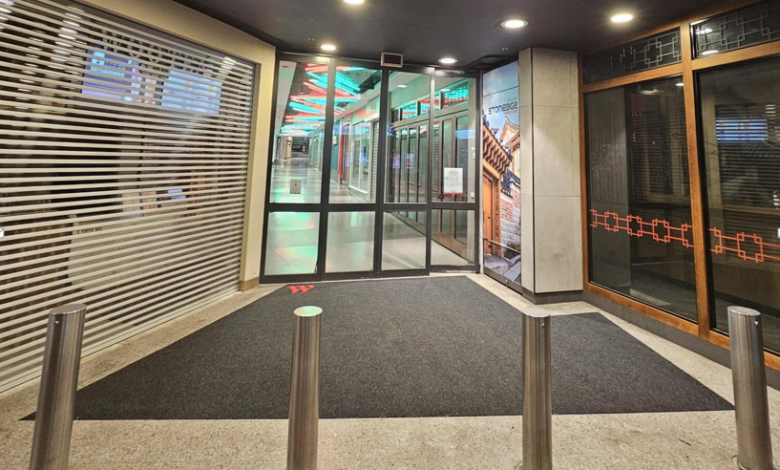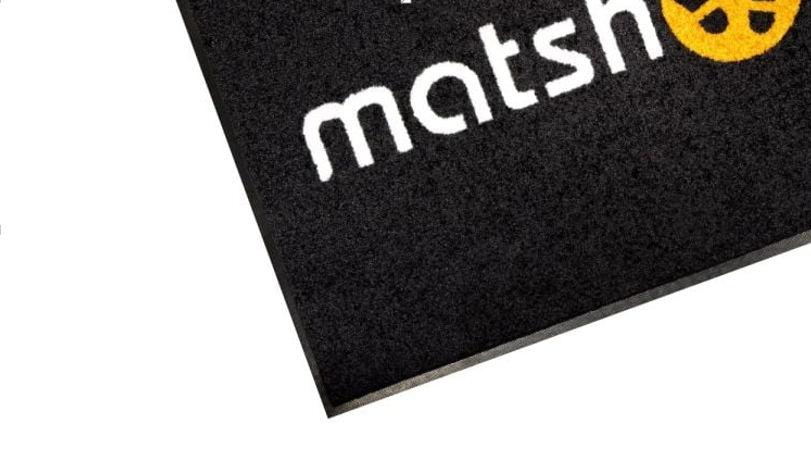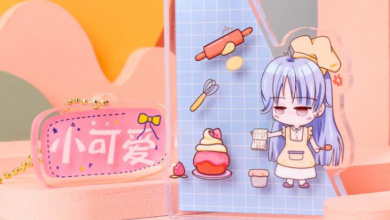Design Meets Function: How Custom Floor Mats Strengthen Brand Identity in Retail Spaces

A retail space tells a story long before a customer picks up a product. Every corner, colour, and surface communicates something about the brand. Many retailers focus on shelves, lighting, and signage but forget one of the most visible features in a store, the floor. It takes a customer less than a few seconds to form an impression after walking through the door. What they step on matters more than most realise.
In that brief moment, the floor sets a tone. Is it clean, stylish, or functional? Or does it look tired, uninviting, and neglected? These subtle cues shape how people feel about a brand. Well-placed custom floor mats can change that perception immediately. They act as a practical surface that enhances safety while also serving as an extension of a brand’s visual identity. The right mat can make a small store look polished or turn a large retail space into something memorable.
Across Australia, retail brands are realising that design is not limited to what hangs on walls. It extends to every touchpoint, even underfoot. A floor mat can quietly carry a logo, reflect brand colours, and add cohesion to a space that might otherwise feel disjointed. Design, function, and identity come together where customers least expect it.
The Overlooked Branding Canvas
Visual identity runs deeper than logos and fonts. It’s about creating a consistent atmosphere that reflects the company’s values and personality. When customers step into a retail space, they subconsciously absorb cues from the environment. Lighting, texture, and placement all work together to communicate professionalism and trust.
Floor mats provide a branding surface few competitors think about. While most focus on displays and digital signage, mats can serve as subtle yet powerful branding tools. Here are ways they contribute to brand storytelling:
- Visual Continuity: Matching brand colours across fixtures, walls, and mats maintains consistency, making the space appear more cohesive.
- Logo Placement: A logo near the entrance creates immediate brand recognition and sets the tone before any verbal interaction occurs.
- Mood Reinforcement: A playful retailer may opt for bold patterns, while a luxury boutique could choose minimalist tones with fine texture.
In short, mats become part of the interior design language. They complement other brand elements and create a complete customer experience. Every small detail matters when trying to communicate quality and intention.
First Impressions Start at the Door
Retailers have long known the importance of first impressions. A clean, visually appealing entrance influences how long customers stay and how they perceive the brand. The entrance mat is often the first and last surface they interact with, making it one of the most overlooked marketing assets.
Imagine entering a high-end shoe store. The doors open to a crisp, perfectly fitted mat featuring a subtle embossed logo and rich texture. Without saying a word, the brand projects sophistication and care. Contrast that with a frayed, generic mat at the entrance of another store. The difference is instant, and it affects how customers perceive the quality of the products inside.
First impressions can be broken down into a few key psychological effects:
| Element | Customer Impact |
| Cleanliness | Signals professionalism and attention to detail |
| Design | Reinforces brand identity through colour and style |
| Placement | Shows forethought and care for customer experience |
| Condition | Reflects how much value a store places on maintenance |
Retail spaces that combine design with hygiene build trust quickly. When the first thing a customer steps on feels clean, cushioned, and branded, it sends a strong message. It tells them they are entering a space that values presentation and quality.
Function Meets Design: Safety, Cleanliness, and Comfort
A strong brand identity means little if the environment fails to function well. In retail, practicality and design must support each other. Floor mats are a perfect example of how form and function can merge seamlessly.
Beyond appearance, custom mats contribute to safety and cleanliness. They trap dirt and moisture, reducing slips and preventing grime from spreading across tiles or polished concrete. For staff working long hours, mats with cushioned backing help reduce fatigue and joint strain, creating a safer, more comfortable environment.
The impact of functional design in retail settings can be summarised as follows:
- Safety: Slip-resistant surfaces protect both customers and employees.
- Cleanliness: Mats capture debris at the entrance, cutting cleaning time and costs.
- Durability: Quality mats resist wear, keeping their shape and colour for years.
- Comfort: Anti-fatigue layers promote better posture for staff in service zones.
- Aesthetics: Custom printing and material finishes can match flooring and decor.
Every functional choice adds to a retailer’s credibility. Customers rarely notice safety measures consciously, but they do register how comfortable and clean a store feels. When design supports these unseen benefits, it reinforces the brand’s promise of care and reliability.
In competitive markets like fashion and beauty, where presentation directly affects sales, the right flooring solution can influence how customers behave. A safe and inviting environment encourages browsing, while discomfort shortens dwell time. The floor becomes part of the brand experience, merging practicality with visual appeal.
See also: Best Chair Yoga for Weight Loss Techniques and Benefits Explained
Customisation as a Reflection of Brand Personality

Retailers express who they are through more than just products. Interior elements like lighting, signage, and flooring tell customers what to expect. Mats play a part in this storytelling because they can be personalised down to the finest detail.
Different materials, patterns, and textures can reflect brand identity in unique ways:
- Luxury brands often use neutral colours, subtle textures, and fine print for a premium look.
- Family retailers prefer bright hues and cheerful designs that feel warm and inviting.
- Tech and electronics stores might choose clean, modern designs with sharp lines and dark tones.
- Eco-conscious brands use natural fibres or recycled materials to reinforce their sustainability message.
The power of customisation lies in consistency. A mat that complements the store’s colour palette, wall design, and packaging adds cohesion. It’s a detail customers may not consciously notice, yet it contributes to their overall impression of the brand.
Every design choice communicates something. A textured rubber mat with bold lettering says durability and confidence. A soft, carpet-like mat with muted tones says comfort and approachability. When matched carefully, these design elements extend brand storytelling from the signage above to the flooring below.
Case in Point: Retail Success Stories
Let’s look at how retailers have used mat design strategically to reinforce identity and improve customer experience.
Example 1: Boutique Fashion Store
A Sydney-based boutique wanted to make its small retail space feel more exclusive. They replaced generic black mats with tailored grey mats featuring a minimalist logo in silver thread. The change aligned perfectly with their monochrome interior. Shoppers commented on the “fresh” and “premium” look, and the store reported higher walk-in conversion rates during the following quarter.
Example 2: Supermarket Chain
A national grocery brand introduced colourful, branded mats across high-traffic entry points. Apart from adding personality, these mats reduced cleaning frequency and improved slip safety. The company’s internal survey showed a 20% increase in staff comfort ratings and a noticeable improvement in customer feedback regarding cleanliness.
Example 3: Café Franchise
A coffee chain known for its relaxed, rustic feel opted for mats made from recycled materials with earthy tones. The mats carried subtle branding that matched their eco-friendly message. Customers appreciated the natural texture and the effort toward sustainability, which helped strengthen brand loyalty.
These examples show that attention to detail can translate into measurable outcomes. Whether through improved safety, comfort, or aesthetics, mats help turn everyday spaces into purposeful brand experiences.
Choosing the Right Partner for Design and Durability
Selecting the right supplier is as important as the design itself. A mat that looks impressive but wears out quickly reflects poorly on the brand. Durability, print quality, and functionality must all be part of the decision process.
When retailers assess suppliers, they should focus on three key areas:
| Criteria | Why It Matters | What to Check |
| Material Quality | High-quality fibres or rubber ensure mats maintain shape and colour over time. | Ask about wear tests, UV resistance, and moisture control. |
| Printing Precision | Crisp printing captures brand details clearly and resists fading. | Check for heat-set dyes or digital print techniques. |
| Ease of Maintenance | Mats that clean easily last longer and stay presentable. | Look for washable or quick-dry materials. |
It’s also worth checking for local support. Working with an Australian supplier reduces lead times and guarantees compliance with local safety standards. Reviews and testimonials reveal how reliable a company is when it comes to quality control and customer service.
A strong supplier partnership turns design concepts into real-world assets. Retailers can work closely with experts who understand both aesthetics and performance, ensuring the final product fits perfectly into the brand’s environment.
Why Floor Mats Deserve a Place in Brand Strategy
Most retailers treat mats as an afterthought. Yet they’re among the few elements that every customer interacts with, physically and visually. A strong brand strategy covers not just logos and digital marketing but also physical design choices that connect the brand to everyday experience.
The benefits of custom mats go beyond decoration:
- Brand Recall: Every step on a logo or brand colour reinforces memory.
- Customer Experience: Comfortable, clean surfaces create a more inviting environment.
- Safety and Professionalism: A well-maintained mat shows the business cares about safety and presentation.
- Cost Efficiency: A durable mat protects flooring, reducing long-term maintenance costs.
Brand identity becomes more powerful when all touchpoints tell a consistent story. A well-designed mat might not drive sales directly, but it strengthens the environment where sales happen. The subtlety of detail often separates brands that feel cohesive from those that seem incomplete.
Are You Making the Most of Your Retail Floor Space?
Brand expression doesn’t stop at signage or uniforms. It extends to every inch of the customer journey, including the floor beneath their feet. Retailers aiming to stand out in competitive markets must look at overlooked design opportunities that shape first impressions and influence repeat visits.
Custom mats may appear minor, but they merge functionality with brand storytelling in a way few other elements can. They keep floors safe and clean while reminding customers of who you are and what you represent. When chosen well, they quietly communicate professionalism, care, and style.
The next time you step into your store, look down. The floor could be your most underused branding asset. Thoughtful design and quality materials transform it into a practical, visible extension of your identity. A simple investment in custom mats can turn an everyday surface into a statement of purpose.



